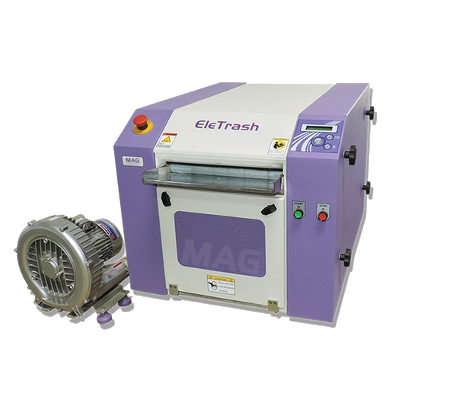All You Need to Learn About Robotic Vision and Its Applications in Advanced Optical Measurement Solutions
Robotic vision stands for a considerable advancement in the junction of computer system vision, expert system, and equipment learning. This modern technology improves the precision of optical dimension systems, making it possible for real-time information evaluation and boosted quality assurance. Its effect covers multiple markets, from manufacturing to healthcare. However, the advancing landscape of robotic vision increases inquiries concerning future abilities and applications (optical measurement system). What innovations exist in advance in this transformative area?
Comprehending Robotic Vision: Key Concepts and Technologies
Robotic vision encompasses the technologies and approaches that allow equipments to interpret and understand aesthetic details from their setting. This field combines aspects of computer vision, fabricated intelligence, and artificial intelligence to assist in computerized decision-making based upon aesthetic data. Trick ideas include photo processing, which involves the improvement and analysis of pictures to extract significant functions, and item acknowledgment, which enables machines to determine and identify things within a scene.

The Combination of Robotic Vision With Optical Dimension Solutions
As industries increasingly demand precision and performance, the integration of robot vision with optical measurement systems has actually emerged as a transformative technique. This harmony allows robots to view and translate their surroundings, improving the capacity of optical measurement systems to examine and evaluate things with unequaled precision. By outfitting optical sensors with advanced imaging modern technologies, robotic vision allows real-time data collection and handling, promoting instant changes to measurement parameters.
The mix empowers automated systems to spot variations in dimensions, surface quality, and positioning, which are essential in high quality control procedures. Improved algorithms, such as artificial intelligence, further boost this integration by boosting the systems' ability to adjust to different environments and scenarios. The integration not only simplifies measurement processes but also reduces mistakes, ensuring that products satisfy rigid industry standards, therefore strengthening the role of robotic vision in the future of optical measurement systems.
Applications of Robotic Vision in Manufacturing
In contemporary manufacturing atmospheres, the usage of vision systems has changed manufacturing processes by making it possible for equipments to perform tasks with remarkable precision and speed. Robotic vision systems are increasingly used for quality control, where they inspect products for defects and guarantee adherence to requirements. These systems utilize electronic cameras and advanced formulas to analyze items in real-time, considerably minimizing the threat of human error.
In addition, robotic vision promotes you can find out more automation in assembly lines, enabling robots to precisely determine elements and construct them with very little downtime. This innovation additionally improves inventory monitoring, as vision systems can monitor supply degrees and identify disparities, ensuring a smooth supply chain.
Furthermore, robotic vision help in the application of smart factories, where information from vision systems can be incorporated with other modern technologies to maximize process. In general, the applications of robot vision in producing show its essential role in enhancing performance, quality, and performance throughout numerous markets
Robotic Vision in Medical Care: Transforming Person Treatment

In recovery, robotic vision help in monitoring person progress and tailoring treatment sessions to individual requirements. It supports medical professionals by automating jobs such as information collection and individual surveillance, enabling more time to concentrate on straight patient communication. Additionally, robotic vision enhances telemedicine by making it possible look here for remote medical diagnosis and online assessments, connecting the gap between patients and health care companies. Overall, the application of robotic vision in healthcare is revolutionizing individual care, leading to boosted results, performance, and client satisfaction.
Future Patterns and Growths in Robotic Vision Innovation
The fast advancement of robotic vision innovation guarantees to additionally boost its applications across various markets, consisting of health care. Future fads suggest a significant change towards including synthetic knowledge and device understanding, enabling systems to gain from vast datasets and enhance precision over time. Improved sensor modern technologies and deep learning formulas are expected to fine-tune item recognition capabilities, permitting robots to translate complicated atmospheres better.

The combination of enhanced reality (AR) with robotic vision will likely change exactly how robotics help in medical treatments and diagnostics. This synergy will certainly help with real-time information visualization, improving decision-making procedures. Additionally, miniaturization of elements will certainly cause even more compact and versatile robotic vision systems appropriate for a range of tasks. As these innovations unfold, industries will witness boosted automation and effectiveness, solidifying robot vision as a foundation of innovative technical services.
Frequently Asked Concerns
What Are the Main Components of a Robot Vision System?
The major elements of a robotic vision system include cams for picture capture, processors for data evaluation, formulas for interpretation, and actuators for activity. Together, these elements enable robotics to regard and interact with their setting successfully.
Just How Does Robotic Vision Improve Precision in Measurements?
Robotic vision improves measurement precision by utilizing advanced imaging modern technologies, allowing precise item discovery and spatial analysis. This ability lowers human error, boosts repeatability, and permits real-time modifications, inevitably improving total measurement dependability and effectiveness.
What Industries Benefit Many From Robotic Vision Innovation?
Different industries benefit significantly from robotic vision technology, consisting of manufacturing, health care, agriculture, and logistics. These fields make use of boosted accuracy, effectiveness, and automation, leading to boosted productivity and lowered operational look at this web-site costs in their particular processes.
Can Robotic Vision Solutions Work in Low-Light Issues?
Robotic vision systems can without a doubt function in low-light conditions, using innovative sensing units and algorithms to boost image clearness. This capacity permits them to perform successfully in numerous settings, consisting of industrial and surveillance applications, despite having very little lighting.
What Are the Prices Linked With Implementing Robotic Vision?
The costs related to executing robotic vision differ significantly, influenced by elements such as video cameras, software program, and combination. Extra costs include maintenance, training employees, and possible upgrades to existing systems, which can build up in time.